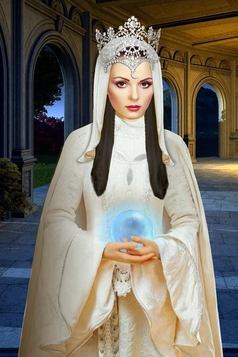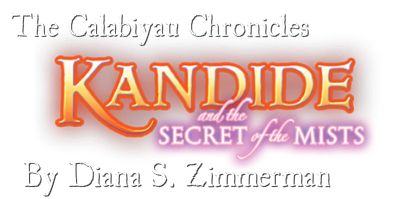
“The difference between science and magic is that magic is proven. Science is still unfolding its truths.” – High Priestess Viviana – Book 3 “Kandide: The Flame Is Fleeting”
The controversy continues… Are there dimensions beyond our own? Do they defy what we think of as the laws of science? Were the ancient civilizations who drew symbols of winged creatures merely fantasizing? Or did they know what many have forgotten?
The late John Lennon openly believed in Faeries, as do hundreds of millions of other people in virtually every culture, throughout the world and its history. Are they crazy to believe that beings exist in different dimensions? Maybe not. A report from Oxford University, published in New Scientist Magazine, states that physicists have confirmed that other dimensions do, indeed, exist.
Like the physicists, I also believe that there are multiple dimensions. If this is the case, then it only makes sense that other life forms exist within these worlds. The long-held belief of the place we call faery land and the elemental beings we call the Fée, could, one day, be scientifically proven to exist. Though I do not believe it will prove to be the “Disneyized” world of Tinkerbelle—but a world far more ethereal and illusive.
My “Kandide” trilogy (www.kandide.com) dares to expand upon this multi-dimensional concept. Tens of thousands of “Kandide” readers, young and old, have entered the land of Calabiyau—which is the term string physics has given to the twelve different dimensions that many physicists believe exist. (Note: In string physics, Calabiyau is spelled calabi-yau with the hyphen.)
What Kandide fans have discovered is a “page-turning adventure” set in a magical land that is far more like our own than we care to admit. Like ours, it is a world torn apart by sectarian strife.
Utilizing a format that is “jam-packed with fantasy and adventure,” the Kandide trilogy helps us escape day-today life, as well as to better understand ourselves, our thinking, and the dimension we, as humans, occupy.
Magic and magical beings inspire our dreams and embolden our scientific discoveries. Calabiyau is a world where science and magic are intertwined. Or as the High Priestess Viviana, a pivotal character in the second and third Kandide books, proclaims: “The main difference between science and magic is that magic is proven. Science is still unfolding its truths.”
And so it is. Any one who explores the drawings of Leonardo Da Vinci will see images that project what was once called fantasy and were attacked as heresy. Da Vinci’s drawings were not fantasy at all. What seemed like magic during his time were actually scientific explorations of flying machines and space.
Einstein told us that we cannot exceed the speed of light. In 1994, the physicist, Miguel Alcubierre, theorized that it is possible using Einstein’s own theorem. NASA physicist, Harold G. White, agrees with Alcubierre. He and his team are working on what was once considered fantasy—the Star Trek-like concept of a warp drive. The same parallels are happening with the science behind other-dimensional worlds.
As I continue to explore this science, along with the history and art of the Fée, I am ever more aware of the connectivity between discovery and imagination. It is this fascination with fantasy and adventure that led to the creation of the kingdom of Calabayiau—the land of Kandide where magic is, indeed, as normal as the sunrise.
My goal was and is to bring this world ever closer to our own, which is why the trilogy centers on very human qualities—the vain, yet exquisite Kandide, her mischievous spell-weaving brother Teren, her sweet and kind younger sister Tara, and a charismatic Imperfect named Jake. Their encounters with the forces of evil, from internal self-doubt to the base self-interests of deliciously wicked enemies, are none to different than our own. They simply happen in the world that I control and create. But then, most what happens in each of our lives is also under our control.
It has always fascinated me how long it takes science to catch up to “fantasy.” But sooner or later, it does. Hopefully, one day, we can all visit “Calabiyau”—not just between the pages of my books, but for real. Until then, I offer my stories as an escape, as well as to expand our thinking, both scientifically and sociologically.
May the science unfold.
Diana
The controversy continues… Are there dimensions beyond our own? Do they defy what we think of as the laws of science? Were the ancient civilizations who drew symbols of winged creatures merely fantasizing? Or did they know what many have forgotten?
The late John Lennon openly believed in Faeries, as do hundreds of millions of other people in virtually every culture, throughout the world and its history. Are they crazy to believe that beings exist in different dimensions? Maybe not. A report from Oxford University, published in New Scientist Magazine, states that physicists have confirmed that other dimensions do, indeed, exist.
Like the physicists, I also believe that there are multiple dimensions. If this is the case, then it only makes sense that other life forms exist within these worlds. The long-held belief of the place we call faery land and the elemental beings we call the Fée, could, one day, be scientifically proven to exist. Though I do not believe it will prove to be the “Disneyized” world of Tinkerbelle—but a world far more ethereal and illusive.
My “Kandide” trilogy (www.kandide.com) dares to expand upon this multi-dimensional concept. Tens of thousands of “Kandide” readers, young and old, have entered the land of Calabiyau—which is the term string physics has given to the twelve different dimensions that many physicists believe exist. (Note: In string physics, Calabiyau is spelled calabi-yau with the hyphen.)
What Kandide fans have discovered is a “page-turning adventure” set in a magical land that is far more like our own than we care to admit. Like ours, it is a world torn apart by sectarian strife.
Utilizing a format that is “jam-packed with fantasy and adventure,” the Kandide trilogy helps us escape day-today life, as well as to better understand ourselves, our thinking, and the dimension we, as humans, occupy.
Magic and magical beings inspire our dreams and embolden our scientific discoveries. Calabiyau is a world where science and magic are intertwined. Or as the High Priestess Viviana, a pivotal character in the second and third Kandide books, proclaims: “The main difference between science and magic is that magic is proven. Science is still unfolding its truths.”
And so it is. Any one who explores the drawings of Leonardo Da Vinci will see images that project what was once called fantasy and were attacked as heresy. Da Vinci’s drawings were not fantasy at all. What seemed like magic during his time were actually scientific explorations of flying machines and space.
Einstein told us that we cannot exceed the speed of light. In 1994, the physicist, Miguel Alcubierre, theorized that it is possible using Einstein’s own theorem. NASA physicist, Harold G. White, agrees with Alcubierre. He and his team are working on what was once considered fantasy—the Star Trek-like concept of a warp drive. The same parallels are happening with the science behind other-dimensional worlds.
As I continue to explore this science, along with the history and art of the Fée, I am ever more aware of the connectivity between discovery and imagination. It is this fascination with fantasy and adventure that led to the creation of the kingdom of Calabayiau—the land of Kandide where magic is, indeed, as normal as the sunrise.
My goal was and is to bring this world ever closer to our own, which is why the trilogy centers on very human qualities—the vain, yet exquisite Kandide, her mischievous spell-weaving brother Teren, her sweet and kind younger sister Tara, and a charismatic Imperfect named Jake. Their encounters with the forces of evil, from internal self-doubt to the base self-interests of deliciously wicked enemies, are none to different than our own. They simply happen in the world that I control and create. But then, most what happens in each of our lives is also under our control.
It has always fascinated me how long it takes science to catch up to “fantasy.” But sooner or later, it does. Hopefully, one day, we can all visit “Calabiyau”—not just between the pages of my books, but for real. Until then, I offer my stories as an escape, as well as to expand our thinking, both scientifically and sociologically.
May the science unfold.
Diana

 RSS Feed
RSS Feed